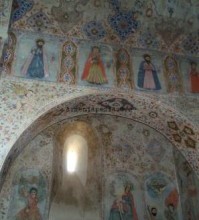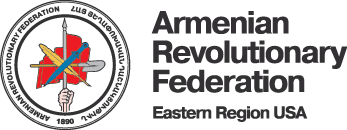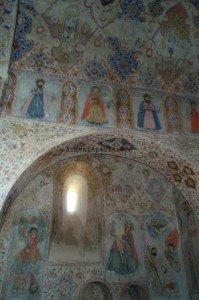LCO Launches Meghri Restoration Project

On March 11-13, the international body of the Land and Culture Organization (LCO) (also known as the Organisation Terre et Culture, or OTC) held its general assembly meeting in Lyon, France, to discuss current and upcoming Armenian historical restoration projects.
The most recently completed LCO/OTC project was the 7th-century Tchitckhanavank Monastery in the northern Lori region of Armenia. After five years of work by LCO/OTC volunteers, local artisans, archeologists, and architects, the site was consecrated in August 2015 and renamed Sourp Khatch (Holy Cross). As part of its Armenian historical preservation mission, the organization is researching and documenting Armenian national monuments and properties confiscated by the Turkish state; this research can be viewed online at www.collectif2015.org.
A new campaign has just been launched in the city of Meghri, Armenia, where the LCO will be renovating the 17th-century Sourp Hovannes Mkritch (St. John the Baptist) basilica church. This historical site has a unique Armenian style but is in serious disrepair. The ornamental motifs of the interior frescoes were clearly influenced by Persian decorative designs, likely to prevent vandalism; even the depicted structures were built in such a way as to resemble Persian architecture. The walls were painted by artists from the family of Naghash Hovnatanian, a renowned artist from the period whose works can also be seen in the Mother See of Holy Etchmiadzin.
LCO will launch the first phase of the project during the summer campaign of 2016. Volunteers will be clearing Sourp Hovannes Mkritch’s grounds and will participate in archaeologic excavations with Armenian archaeologists. A workday packed with physical labor is just one part of the LCO/OTC experience. Volunteers live in a very modest home and spend their non-working hours connecting with local residents while enjoying local activities and their surroundings. In addition, during off-hours volunteers go on excursions of Armenian historical sites.
Meghri, one of the most fascinating and remote cities in Armenia, is situated in the southernmost tip overlooking the Iranian border on the Arax River. This tranquil, quaint city with a population of 4,500 is in a fertile valley, where the villagers grow Armenia’s national symbol the pomegranate, as well as figs, walnuts, and persimmon. Today, as Armenia’s southern “gateway,” Meghri maintains its strategic and economic significance as a town located at the crossroads of the South Caucasus—Armenia, Nagorno-Karabagh, Iran, and Russia.
LCO is accepting volunteers for its Summer 2016 Campaign. To apply online or for more details, visit www.lcousa.org.
Source: Armenian Weekly Mid-West

